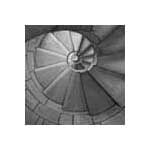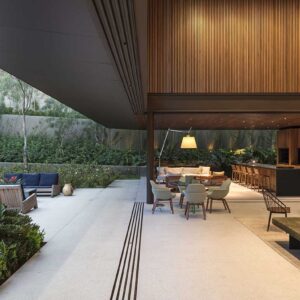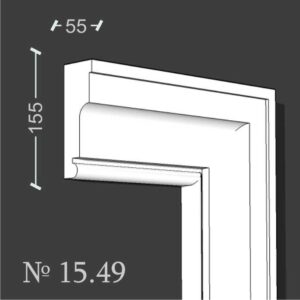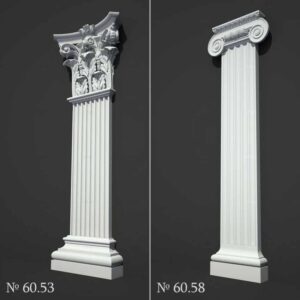In the world of kitchen design, less often means more, especially when it comes to modern small kitchens. This piece delves into the allure of chic simplicity, illustrating how a minimalist approach can transform small kitchen spaces into elegant and highly functional areas. We explore the interplay between design and practicality, highlighting how a restrained palette and clever layout choices can elevate compact kitchens.
Streamlined Elegance in Small Kitchen Spaces




The modern small kitchen is a marvel of efficient design, where every inch is optimized for both function and style. In these spaces, streamlined elegance is not just an aesthetic choice, but a practical necessity. The challenge lies in creating an environment that feels open and inviting, despite the limitations of size. This can be achieved through careful planning, a focus on simplicity, and an emphasis on quality over quantity.
The cornerstone of this approach is sleek cabinetry. In a small kitchen, cabinets play a dual role – they must be functional, providing essential storage, but they also set the tone for the overall design. Choosing cabinetry with clean lines and a minimalist design helps to reduce visual clutter. When combined with integrated appliances, the kitchen attains a seamless and cohesive look. The appliances blend into the cabinetry, creating a unified and streamlined appearance. This not only saves space but also enhances the modern aesthetic of the kitchen.
A monochromatic color scheme is another key element in achieving streamlined elegance. By using a limited color palette, typically based on neutral tones, the space feels larger and more cohesive. Light colors, in particular, can make a small kitchen feel brighter and more open. White or light gray cabinets, paired with a matching backsplash and countertops, can create a sense of spaciousness. The monochrome look is not just about the use of a single color, but about the careful layering of shades and textures within that color family.
The right lighting can transform a small kitchen, making it feel more spacious and luxurious. LED strip lighting under cabinets, pendant lights over a dining area, and well-placed task lighting can all contribute to a well-lit, functional space. Lighting not only serves a practical purpose but can also be used to highlight design features and create ambiance.




In terms of layout, the goal is to maximize space while maintaining functionality. This often means opting for an L-shaped or galley kitchen layout, which allows for efficient movement and workflow. In these layouts, the kitchen ‘triangle’ – the arrangement of the sink, stove, and refrigerator – is compact, minimizing the distance between these key areas.
Storage solutions in small kitchens need to be creative and efficient. This might include pull-out pantries, corner drawers, and under-sink storage. The aim is to utilize every available inch of space without the kitchen feeling cramped or overcrowded. Clever storage solutions not only help in keeping the kitchen organized but also contribute to the streamlined aesthetic.
In these kitchens, every detail matters. From the handles on the cabinets to the faucet at the sink, each element should be chosen for both its functionality and its contribution to the overall design. This attention to detail ensures that the kitchen is not just a place to cook, but a space that is enjoyable to be in.
In conclusion, the modern small kitchen is a testament to the idea that limited space does not mean limited style. Through the use of sleek cabinetry, a monochromatic color scheme, efficient lighting, a thoughtful layout, and innovative storage solutions, these kitchens can achieve a sense of streamlined elegance that is both beautiful and practical. They prove that even the smallest spaces can be transformed into stylish and functional areas with the right design approach.
Innovative Storage Solutions in Modern Kitchens




The modern kitchen is more than just a place for cooking; it’s a hub of creativity and efficiency. In small kitchens, space is at a premium, making innovative storage solutions not just desirable but essential. The key to success in these spaces lies in cleverly maximizing every square inch while maintaining a sleek and uncluttered aesthetic.
Multi-functional furniture is a game-changer in small kitchen design. Items such as fold-down tables, extendable countertops, and stackable chairs provide the flexibility to adapt the space to different needs. A fold-down table, for instance, can double as a workspace or dining area, then be tucked away when not in use. This versatility is crucial in small kitchens, where every piece of furniture must earn its place.
Hidden compartments are another innovative storage solution. These can be integrated into the cabinetry, allowing for a clean and streamlined look. For example, a toe-kick drawer at the base of cabinets provides a discreet storage space for items that are not frequently used. Similarly, pull-out spice racks and vertical storage for baking trays make efficient use of narrow spaces.
Smart shelving systems are essential in small kitchens. Open shelving can create an airy feel, making the kitchen appear larger. It also allows for easy access to everyday items. However, the key is to keep these shelves organized and clutter-free. Using uniform storage containers or baskets can help maintain a tidy appearance while adding a touch of style.
The layout of storage is just as important as the storage solutions themselves. Items should be stored logically, with the most frequently used items within easy reach. For example, pots and pans can be hung on a wall-mounted rack above the stove, while dishes and glasses can be stored in an overhead cabinet near the dishwasher. This thoughtful arrangement not only saves time but also contributes to a more enjoyable cooking experience.




Innovative storage solutions also extend to appliances. Compact and integrated appliances are ideal for small kitchens. An integrated dishwasher or refrigerator can be concealed behind cabinetry panels, maintaining the sleek lines of the kitchen. Similarly, compact appliances, such as a combination microwave and oven, can save space without sacrificing functionality.
The use of vertical space is another clever storage strategy. Wall-mounted racks for utensils, magnetic knife strips, and hanging pot racks all make use of vertical space, freeing up valuable counter and cabinet space. This approach not only provides additional storage but also adds visual interest to the kitchen.
In these kitchens, organization is key. Every item should have a designated place, and there should be a conscious effort to avoid accumulating unnecessary items. This disciplined approach to storage and organization ensures that the kitchen remains functional and uncluttered.
In summary, innovative storage solutions are at the heart of modern small kitchen design. By embracing multi-functional furniture, hidden compartments, smart shelving, thoughtful layout, compact appliances, and the use of vertical space, these kitchens can be transformed into models of efficiency and style. The goal is to create a space that is not just functional, but also a joy to use, where every element works together to create a harmonious and efficient kitchen environment.
Simplicity and Style in Compact Kitchen Decor



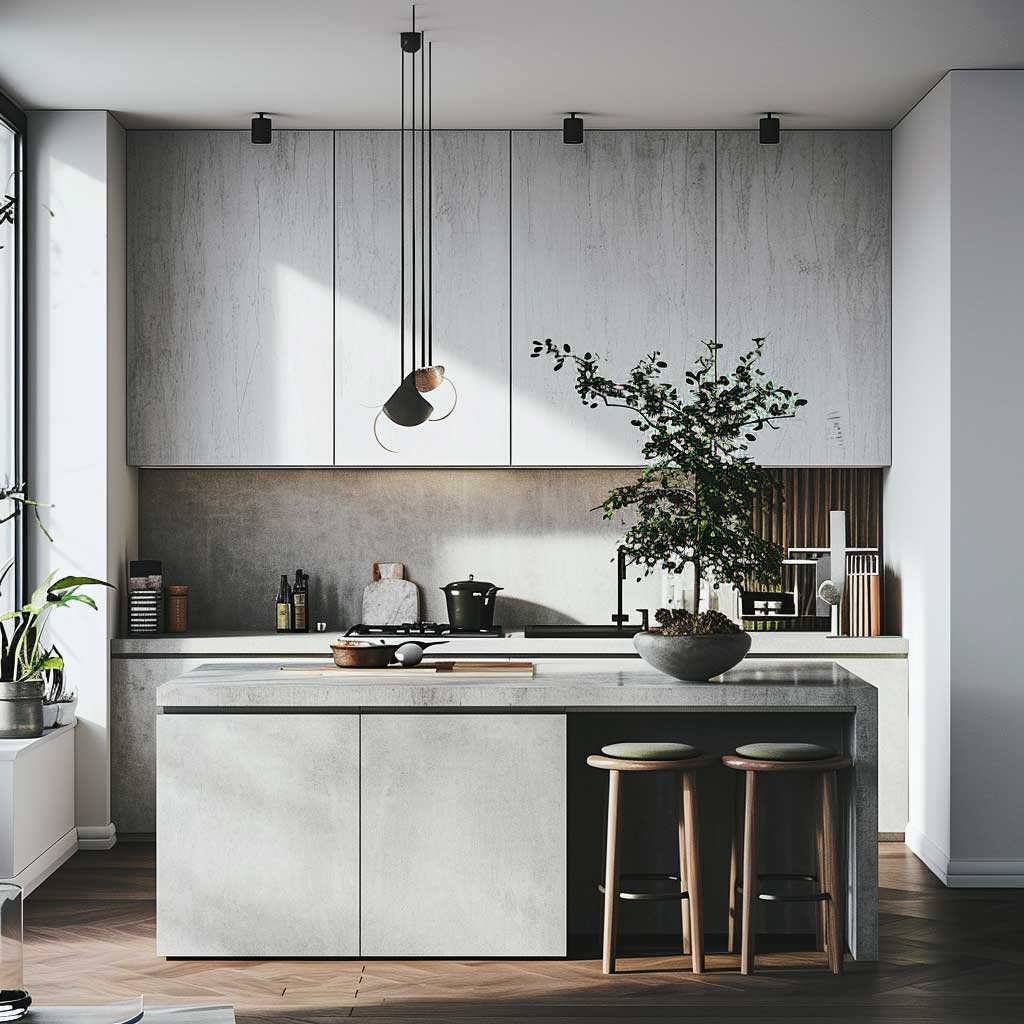
In the realm of kitchen design, compact spaces present unique challenges and opportunities. The modern small kitchen, with its emphasis on simplicity and style, is a perfect example of how constraints can inspire creativity. Here, the focus is on creating a space that is both aesthetically pleasing and highly functional, where every design choice has a purpose.
Minimalistic design elements are the backbone of simplicity in compact kitchen decor. This approach involves stripping away the unnecessary, leaving only what is essential. In a small kitchen, this means clean lines, uncluttered surfaces, and a pared-back aesthetic. The beauty of minimalism is that it not only makes the space look larger and more open but also creates a calm and orderly environment.
Color plays a significant role in achieving this blend of simplicity and style. Subtle color contrasts can be particularly effective in small kitchens. A predominantly white or light-colored palette can be complemented with accents of darker or bolder colors. This creates visual interest without overwhelming the space. The use of color should be intentional, with each hue adding to the overall harmony of the kitchen.
Texture is another element that can add depth and warmth to a compact kitchen. Even in a minimalist setting, textures can be layered to create a sense of comfort. This might include a wooden cutting board, a woven rug, or brushed metal fixtures. These textural details contribute to the kitchen’s character and charm without detracting from its simplicity.




In terms of layout, the focus should be on maximizing efficiency. This might involve a galley-style layout, which is ideal for small spaces, or an L-shaped configuration that allows for a natural workflow. The arrangement of appliances and storage should be carefully considered to ensure that the kitchen is easy to navigate and use.
Storage solutions in a compact kitchen need to be both innovative and stylish. Hidden storage, such as pull-out drawers and integrated appliance garages, can keep countertops clear and maintain the minimalist aesthetic. Open shelving can also be used, but it should be kept orderly and curated, with only a few decorative items or frequently used dishes on display.
Lighting is crucial in a small kitchen, both for practicality and ambiance. Good lighting can make a kitchen feel more spacious and inviting. This might include under-cabinet lighting, a statement pendant light, or recessed ceiling lights. The choice of lighting fixtures should complement the kitchen’s overall design, adding to its aesthetic appeal.
In summary, simplicity and style in compact kitchen decor are about making the most of limited space without sacrificing beauty or functionality. It’s a balancing act between minimalism and warmth, efficiency and elegance. By carefully selecting colors, textures, layouts, storage solutions, and lighting, a small kitchen can be transformed into a space that is both practical and aesthetically pleasing. It’s a testament to the idea that good design is not dependent on size but on the thoughtful consideration of every detail.
